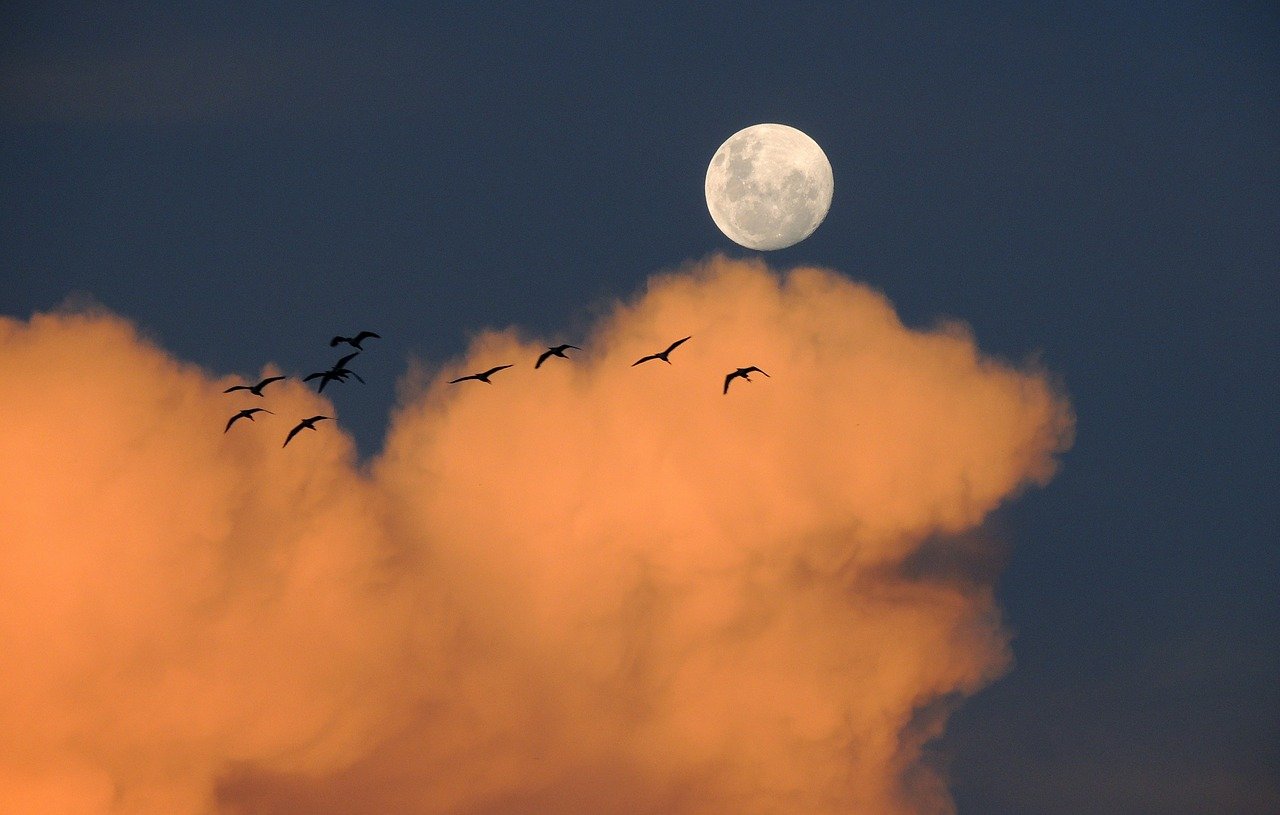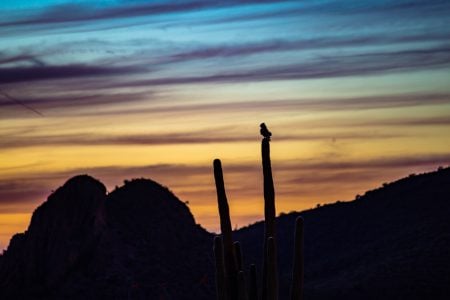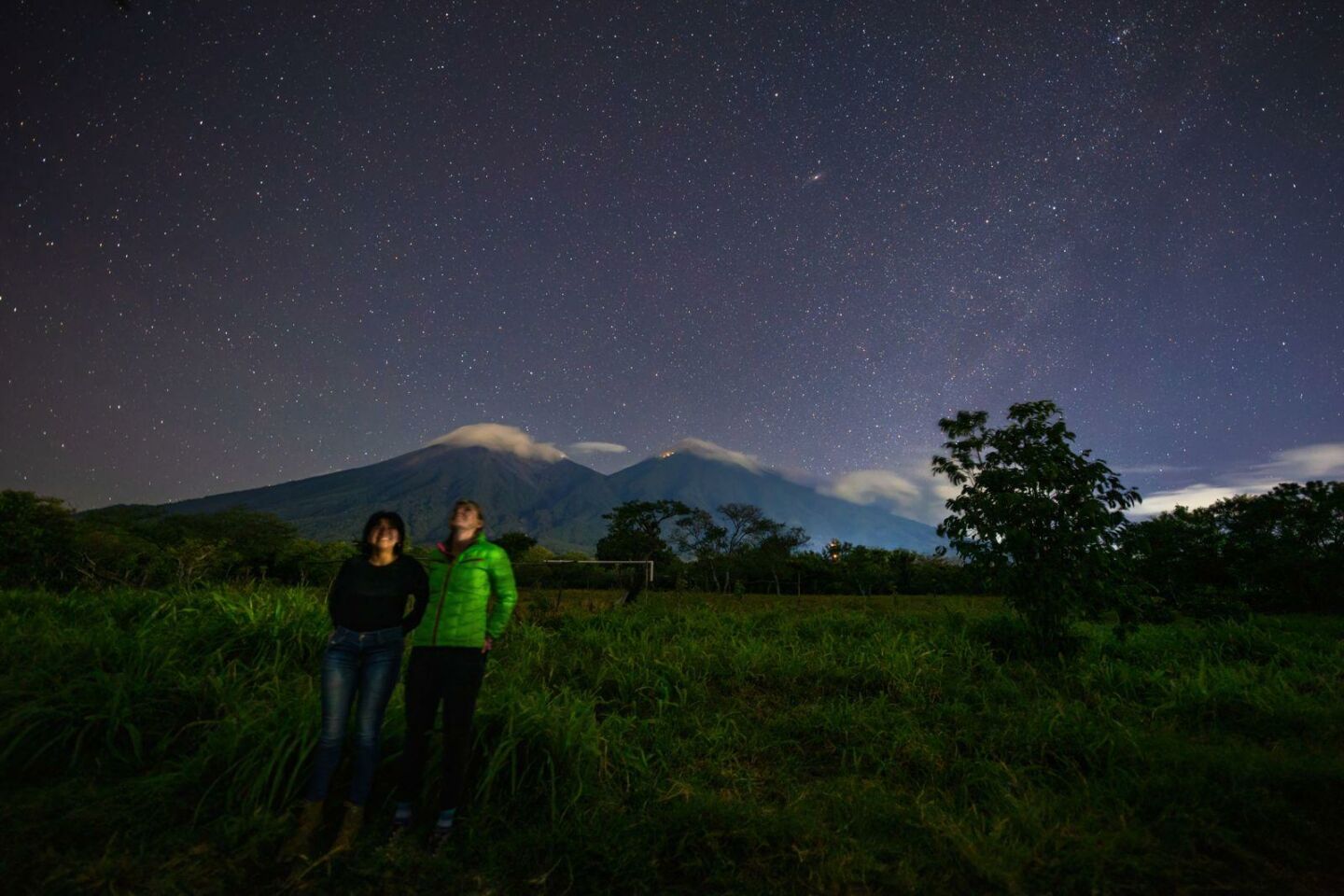
Light Pollution Poses Threat to Migrating Birds

Across the northern hemisphere, the sights and sounds of migrating birds are a sure sign of spring. As temperatures warm and plants bloom, eager birders await the arrival of summer residents like warblers, tanagers, vireos, and grosbeaks. For nature lovers and outdoor enthusiasts, it’s an exciting time to observe the changing of the seasons. But for the birds themselves, migration is a taxing and often fatal endeavor.
Not only is the journey from wintering grounds exhausting and dynamic by nature, but there are also many anthropogenic threats to migrating birds, such as habitat loss and climate change. Man-made structures also pose a threat. A recent study estimates that between 100 million and one billion birds are killed in the United States each year as a result of collisions with buildings. Given that most songbirds migrate at night, it’s no surprise that light pollution is a significant contributor to the harm of these birds. In addition to disrupting circadian rhythms, excessive artificial light at night (ALAN) can also disorient birds during migration. Bright lights at night on large buildings attract birds in the same way that bright porch lights attract moths, which can result in fatal collisions.
Research on why birds are attracted to these brightly lit buildings is ongoing and scientists still have many questions about how light pollution affects the specific biology and ecology of different species. One research team recently studied the distributions of birds near the brightest areas of the northeast U.S. and published their findings in Ecology Letters. In an article in Science Daily, the scientists report that they “found an increasing density of birds the closer you get to these cities. The effect goes out about 200 kilometers [about 125 miles]. We estimate that these flying birds can see a city on the horizon up to several hundred kilometers away. Essentially, there is no place in the northeastern United States where they can’t see the sky glow of a city.”
Another study recently published in Scientific Reports investigated the different effects light pollution has on 298 species of birds. According to the authors, “It is well known that bird mortality due to collisions with buildings is related to light emissions from the buildings, but some species appear more susceptible to collision than others, suggesting that light pollution has a species-specific effect among nocturnal migrants.”
A recent study identified certain species as ‘super colliders’, species that are more likely than others to collide with buildings. According to an Audubon article summarizing the results of the study, “Migrating song birds that vocalize, or call, at night during their flights are far more likely to strike buildings than those that are silent.” It seems, too, that birds vocalize more frequently when they become disoriented by ALAN, which attracts additional members of their flocks and leads to more collisions.

Seabirds are another group of birds known to be adversely affected by artificial light at night. A group of scientists from around the world collaborated on a study entitled “Seabird mortality induced by land-based artificial lights,” which was published in Conservation Biology. The team found that “Burrow-nesting seabirds are attracted to, and disorientated by, artificial lights. Light-induced landings can be fatal because collisions with human-made structures (e.g. buildings, electric wires, and pylons, fences, or posts) or the ground can fatally injure the birds. Even if uninjured, grounded birds may be unable to take off again and are vulnerable to predation, vehicle collisions, starvation, dehydration, or poaching.” They determined that petrels and shearwaters are the most affected seabirds and concluded that the need for further research is urgent due to the critical conservation status of many seabirds.
While completely darkening cities isn’t a practical solution, researchers are investigating effective mitigation strategies that balance human needs for light against avian needs for darkness. The Guardian notes, “Any city with glass structures and bright lights at night is a culprit, but some are more dangerous to birds than others. Experts say that day or night, the vast majority of collision deaths are caused by low- and medium-rise buildings. However, skyscrapers cause a higher rate of deaths.” The Cornell Lab of Ornithology also published a study last month ranking the most dangerous cities in the U.S. for migrating birds. The study identifies Chicago, Houston and Dallas as high-risk areas for migratory birds and states that “while all urban areas should take care to minimize ALAN, our analysis indicates that actions taken in these particular cities would benefit the largest numbers of birds.”
As research on the issue continues, small but important changes can be made now to reduce these fatalities. Advocacy groups in North America are working to educate citizens, business owners, and elected leaders about this issue and implement best practices.
The Fatal Light Awareness Program (FLAP) was among one of the first groups to raise awareness about the issue. Based in Canada and established in 1993, FLAP estimates that “1 to 10 birds die per building, per year.” FLAP offers many resources on their website for learning about the issue and strategies for individuals and businesses to reduce the problem, including brochures outlining BirdSafe standards for buildings.
In Salt Lake City, businesses and homeowners can take the Lights Out Salt Lake Pledge, an initiative led by Tracy Aviary. During peak bird migration periods—from March to May and from August to October—people who have taken the pledge turn out all unnecessary lights from 11 p.m. to 6 a.m. Tracy Aviary is also leading the Salt Lake Avian Collision Survey (SLACS), a citizen science research project seeking to understand the effects of light pollution in the area and find ways to decrease the impact of human activities on birds.
The Audubon Society is also committed to mitigating the problem and advocating for dark skies for migrating birds. Through research, Audubon has determined that “While lights can throw birds off their migration paths, bird fatalities are more directly caused by the amount of energy the birds waste flying around and calling out in confusion. The exhaustion can then leave them vulnerable to other urban threats.”
As Audubon discovered in a study at the annual 9/11 memorial in New York City with the Cornell Lab of Ornithology, turning off bright lights intermittently encourages birds to fly away from buildings and decreases collisions. Audubon has partnered with other organizations to establish Lights Out programs in over 20 cities in North America. They also offer sample form letters to send to building managers and elected officials on their website.
As municipalities develop initiatives to reduce light pollution in public areas, homeowners can take action now to address the issue in their own backyard. Perhaps your yard is bird-friendly, outfitted with feeders, nest boxes, and native plants. Is your outdoor lighting bird-friendly, too? This evening, take a look around your home and assess where you can improve, reduce, or eliminate outdoor lighting. Join your local Lights Out Program and take the pledge to turn off unnecessary lighting. Chat with your neighbors or local birding group about the issue of light pollution and encourage them to take action. These small and simple steps have a cumulative impact that is crucial to reducing light pollution and building communities that are healthier for all species.




















